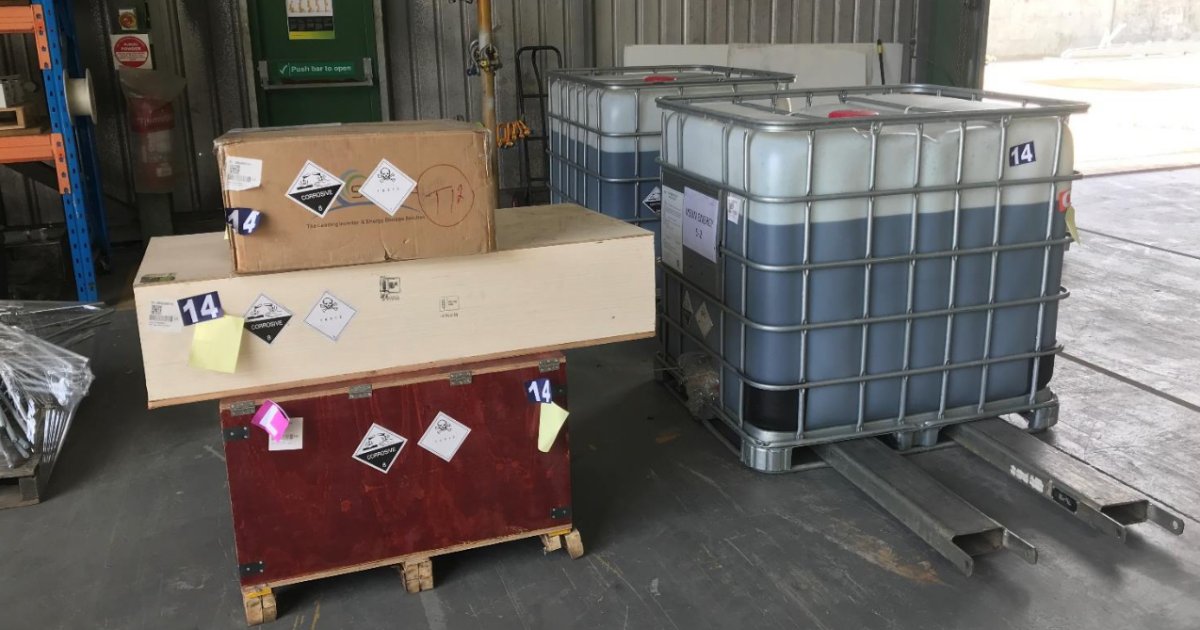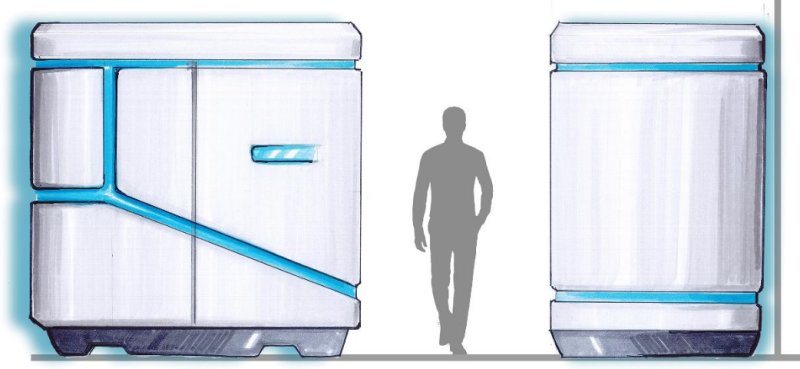
VSUN residential vanadium redox flow battery bits – some assembly required.
Australian Vanadium Limited (AVL) subsidiary VSUN Energy is continuing to chug along towards its goal of developing a residential flow battery system for the Australian market. This battery won’t just be big on capacity.
AVL announced yesterday that VSUN has engaged Western Australia’s CADDS Group to get stuck into designing a new housing for VSUN’s residential vanadium redox flow battery (VRFB) system and to provide potential design changes with view to improving the battery for the Australian market.
VRFBs use a circulating vanadium pentoxide electrolyte solution to store the charge in tanks. They have a lower energy density compared to Li-ion, but among their advantages is the electrolyte is non-flammable and a flow battery offers 100% discharge capability; meaning the battery can be fully discharged without damage. VSUN says the VRFB has a lifespan of more than 20 years, with zero degradation in performance over that time.
The prototype VRFB will be tested at CADDS’ premises with the assistance of engineering capability sourced from Curtin University. All going well, VSUN Energy plans to deploy the unit to a residential customer with a solar power system for further testing under real-world conditions.
Currently, the only residential flow battery available in Australia is Redflow’s ZCell (3kW/10kWh), which is based on the Redflow ZBM2 (and eventually the new Redflow Gen 3).
A Monster Battery
The yet-to-be-named VSUN Energy VFRB will provide 5kW of power and 30kWh of usable storage capacity. The VSUN flow battery will have three times the storage capacity of the ZCell, and two and a bit times that of the popular lithium-ion home battery, Tesla Powerwall (13.5kWh).
It will also be very big on physical size and weight. The image above provided by AVL show a 5kW/30kWh VRFB package with vanadium electrolyte ready for assembly and testing. That’s a lot of electrolyte. The capacity of those intermediate bulk containers (IBCs) is 1,000 litres each. Surely, all of that electrolyte is enough for more than one battery?
Perhaps not. The following is an image of the initial VRFB concept design.
Assuming it’s reasonably to scale and even if the person depicted is as short as I am, that’s a bloody big home battery. Just as a comparison, the Redflow ZCell’s electrolyte volume is 100 litres – but bear in mind that has 10kWh of storage capacity. Still, three times that is only 300 litres.
VSUN inked an agreement with Chinese VRFB manufacturer CEC VRFB Co. Ltd back in September last year, and it’s CEC that supplied the above components. VSUN has also recently ordered a couple of 5kW/30kWh VRFBs from Singapore’s V-Flow Tech for a residential customer and a caravan park in Western Australia.
Looking at the V-Flow PowerCube 5-30, that’s no lightweight either. It’s 1 tonne without electrolyte, 3 tonnes with electrolyte added, and is 1.5m long, 1.7m wide and 2 metres high.
AVL Managing Director Vincent Algar says the VSUN residential battery could be a door-opener for bigger things on the VRFB front.
“By initiating market growth in smaller systems we anticipate a knock-on effect for larger VRFB uptake, which in turn will grow the market for vanadium pentoxide in energy storage.”
I wasn’t able to locate any approximate/anticipated pricing for the VSUN VRFB.
Regardless of how this pans out for VSUN, it’s always encouraging to see Australian companies giving things a red-hot go.


 RSS - Posts
RSS - Posts



The low round trip efficiency (75-80%) of Vanadium flow batteries completely kills them financially for grid tied residential applications.
Fifth and final submission attempt – first four attempts got eaten by the rabid blog software, upon submitting them.
“The yet-to-be-named VSUN Energy VFRB will provide 5kW of power and
30kWh of usable storage capacity. ”
Sounds good to me, depending on the initial capital outlay and the
levelised cost per kilowatt hour.
Those specifications, depending on the two costs mentioned in the
preceding paragraph, to me, make that battery appear ideal for a
single household, without provision for charging a battery powered
car/van/truck, for which, an extra one or two of those batteries would
be required, per vehicle.
“All going well, VSUN Energy plans to deploy the unit to a residential
customer with a solar power system for further testing under
real-world conditions.”
I would volunteer, if they would cover all of the costs (and, if I had
more than the 5kW of rooftop panels that I currently have, that are
resulting in exports of about 10-15kWh per day at present).
🙂
Could you explain what this means in laymans terms?
In a couple of years people may be able to by vanadium flow batteries for their homes and businesses that will provide an alternative to more compact lithium batteries. Personally I’m not sure vanadium is well suited for small scale applications.
I’ve got an 8.5 kW system with some 46 panels and an inverter to handle all of this. I am located in New South Wales near the Hunter Valley and have a small winery. I’m interested in any product like this that would help me to keep my energy costs down.
Currently feeding into the grid but I’m always looking for additional ways in which to use that free sun.
Also happy to provide a site for any product demonstration and would consider contribution to some costs associated with any trial.
John Dugas,
You may wish to look at: https://www.thefifthestate.com.au/energy-lead/energy/tim-forcey-on-how-to-beat-the-winter-gas-blues-and-save-money-and-health/
If your small winery requires process heat, you may wish to look at: https://arena.gov.au/assets/2019/11/appendices-renewable-energy-options-for-industrial-process-heat.pdf
I contacted VSun recently and was advised that their Powercube 5-30 was available at an installed cost of $50-60k. Seems like a lot of dosh until you realise that this is a BIG unit and may last much longer than your average lithium-ion battery, so probably comparable or cheaper than them on a cost per kW-hr basis over its lifetime (ITP’s Battery Test Centre seems to have problems keeping some lithium batteries going for more than a few months). This and the comparative fire safety is a major major upside for me; the physical size and initial outlay is the downside. I would love to see this and any other VRFBs in your comparison table, and some reviews one day (how about it Michael or Ronald?).
I note that RedFlow, which seems to have gone the way of all flesh, had a problem of having to go completely flat and stay that way for a couple of hours to dissolve “stalactites” ; which would be a considerable down side. Do other flow batteries have that problem ? T I A. Ross Halpin, Qld